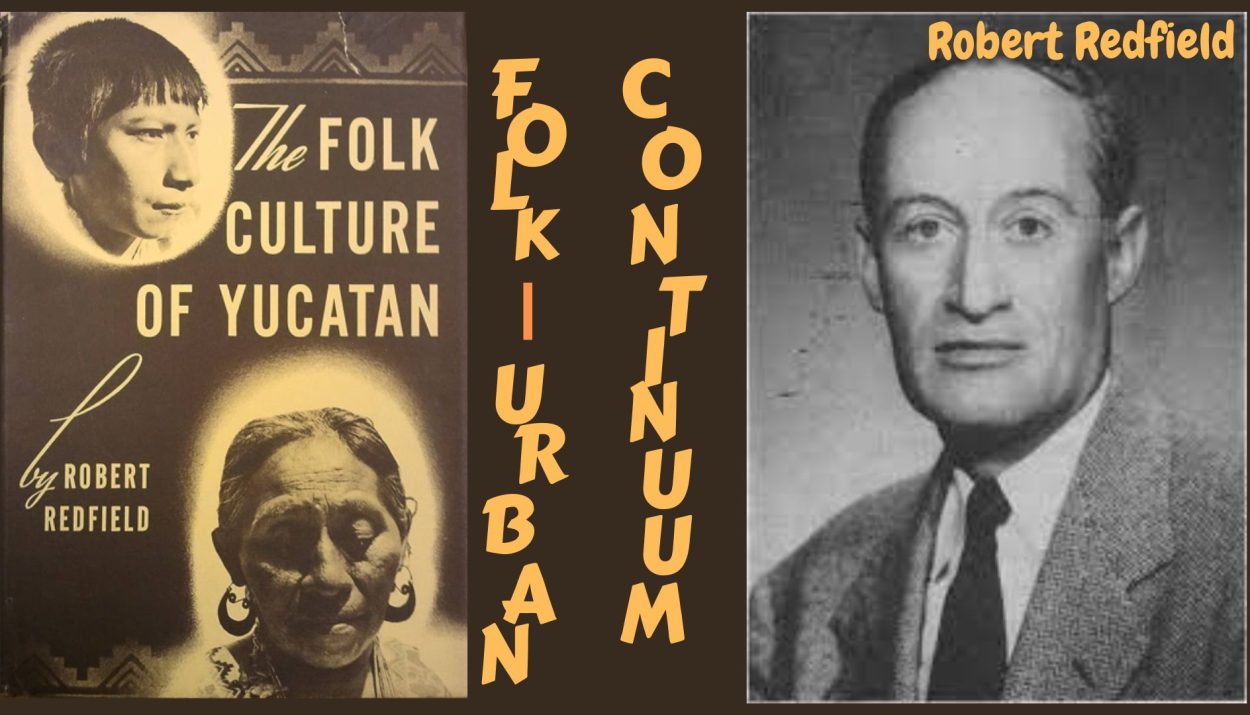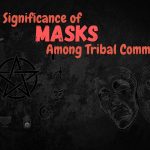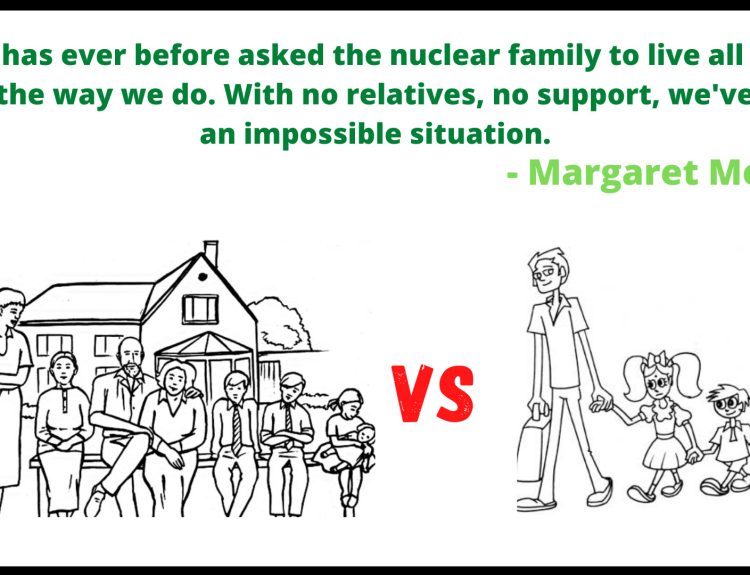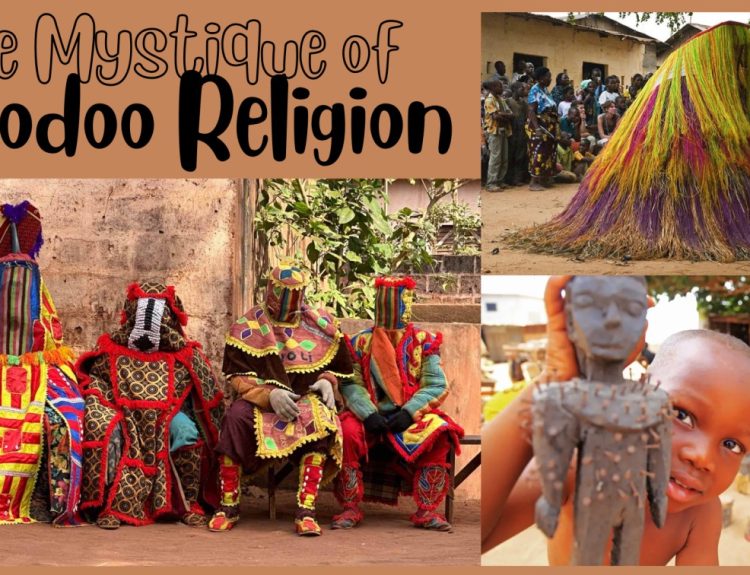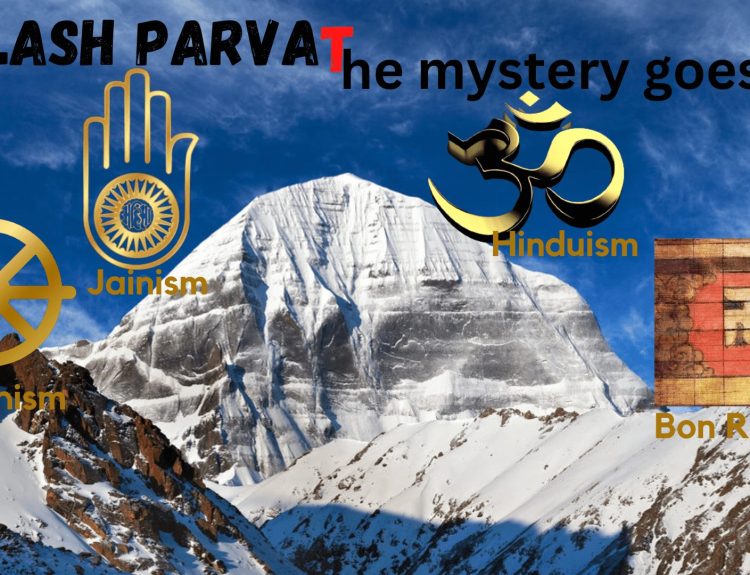The concept of the continuum can also be comprehended through the lens of continuity. When we discuss the folk-urban continuum, we are addressing the seamless connection between rural and urban environments. At one extreme of this unbroken spectrum, we encounter village life, while at the opposite extreme, we find urban life. Both rural and urban settings are social constructs that engage in ongoing interaction. This continuous interplay between rural and urban life is the primary focus of the folk-urban continuum.
Definitions
According to the Merriam-Webster dictionary
- Folk society is defined as a usually small isolated illiterate society characterized as homogeneous in cultural tradition, as having a sacred rather than secular orientation, and as possessing a high degree of internal integration and group solidarity —contrasted with urban society.
- Urban society is defined as a society that is typical of modern industrial civilization and heterogeneous in cultural tradition, that emphasizes secular values, and that is individualized rather than integrated —contrasted with folk society.
Robert Redfield’s Approach to the Folk-Urban Continuum
One of Robert Redfield’s groundbreaking research endeavours that sheds light on the concept of the Folk-Urban Continuum is his extensive study of folk culture in Yucatan, culminating in the publication of his 1941 book, “The Folk Culture of Yucatan.” Redfield conducted extensive fieldwork in Yucatan, a Mexican province, where he encountered four distinct community types that underwent rigorous cross-cultural scrutiny.
These four types of communities are:
- Marida
- Diztas
- Chankom
- Taski
The inhabitants of Marida were characterized as members of an urban society, while those from Diztas belonged to a town society. Chankom’s population was classified as part of a peasant society, and Taski’s residents were associated with a folk or simple society.

Redfield noted a distinct cultural continuum spanning these four communities. He positioned Marida at one end of this continuum and Taski at the opposite extreme. The examination of cultural traits across these societies revealed significant cultural diversity between Taski and Marida. However, Marida’s society and Diztas’ society, on the one hand, and Chankom and Taski, on the other, exhibited a notable degree of shared cultural similarities.
However, it’s worth noting that Diztas and Chankom did share some common characteristics, although to a somewhat lesser degree, particularly in terms of the presence of markets, shops, and intermediaries. As the city community exhibited numerous similarities with the town community on one side, and the peasant and folk communities displayed corresponding features, Redfield categorized Marida and Diztas as urban communities, while Chankom and Taski were described as folk communities.

Based on this remarkably insightful empirical research, Redfield drew the conclusion that no known society should perfectly mirror the societies at these two extremes. Nevertheless, different societies may exhibit certain cultural traits akin to those found at these two extreme ends, positioning them somewhere along the continuum between these two poles.
Therefore, we encounter a continuum spanning these two cultural extremes. The straightforward inference from this scenario is that determining the exact boundaries where folk culture transitions into peasant culture, or where the demarcation line is drawn between peasant culture and town culture, as well as between town culture and city culture, becomes a complex and challenging task.
Read- Diffusion Theory of Cultural Growth
The blending of cultural elements between folk society and peasant society, peasant society and town society, and town society and city society primarily arises from the phenomenon commonly referred to as a “continuum.”
Redfield also noted that as folk societies come into contact with urban ones, they begin to adopt some of the urban society’s characteristics while gradually losing their own distinctive traits. Many unique attributes of folk societies, such as their isolation, homogeneity, and kinship systems, have started to diminish due to increased interaction, resulting in greater diversity. This heightened interaction serves as a primary catalyst for processes like secularization and individualization. Consequently, the intensification of ties with urban societies has contributed to the erosion of essential traits associated with folk societies. Furthermore, interactions with urban centres foster diversity and the growth of market economies, ultimately leading to signs of social disorganization.
Redfield introduced the term “folk-urban continuum” to describe an order in which one end represents a society and culture of the folk type, while the other end signifies urban civilization. He also proposed several overarching hypotheses:
- Primitive and peasant societies, when existing as isolated, homogeneous local communities, tend to exhibit characteristics typical of a ‘folk’ society.
- When these societies come into contact with urbanized societies, they undergo transformations in the direction of an ‘urban’ type of society.
- These various changes are interconnected, as alterations in certain aspects of a society tend to either induce or coincide with changes in other aspects.
Criticism
Oscar Lewis, an American anthropologist, stands out as a notable critic of this concept. Among various points of criticism, Lewis observes that Redfield’s concept appears to depict idealized patterns and scenarios that might not align with empirical or real-world situations. Furthermore, it’s challenging to precisely quantify the scope or intensity of cultural interactions between folk and urban settings. Cultural change may not necessarily follow a linear folk-urban progression but could involve shifts in the heterogeneity of cultural elements, whether they increase or decrease.
Despite its limited theoretical applicability, the concept of the Folk-Urban Continuum remains a valuable tool for enhancing our comprehension of the cultural dynamics within a civilization.
Read- Little Traditions and Great Traditions
References
Book- Indian Anthropology by Nadeem Hasnain
Culture and civilization: Robert Redfield


